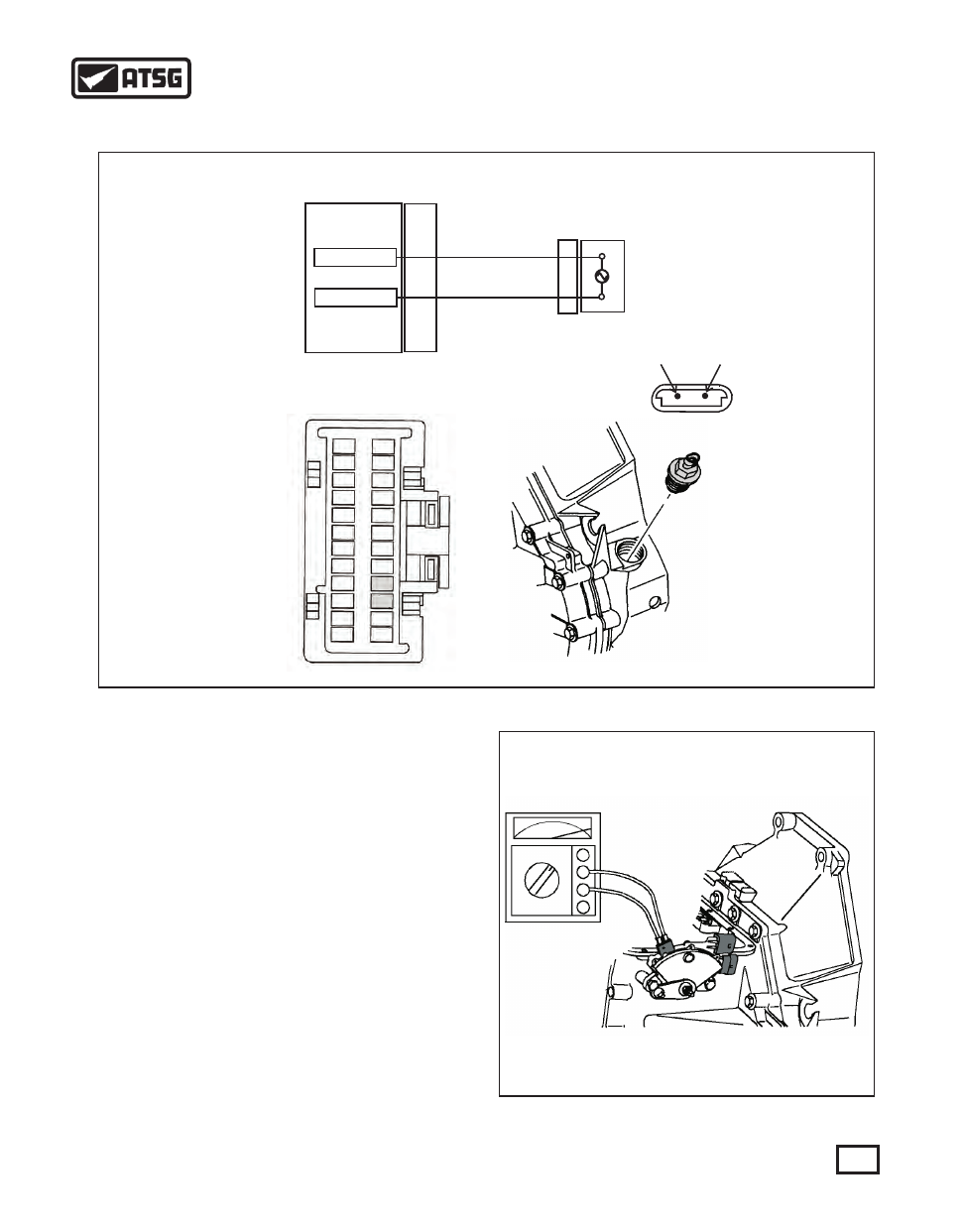Saturn Transmission. Manual - part 5

J2
CONNECTOR
Vehicle Speed Sensor Wiring Diagram
VSS HI
VSS LOW
A10
A9
PCM
J2
Connector
A
B
YELLOW
PURPLE
VEHICLE SPEED
SENSOR
B
A
1
2
3
5
4
6
7
8
9
10
11
12
A
B
VSS
Figure 28
*TCC HOLD CIRCUIT
The TCC Hold Circuit shown in Figure 27 (*5 ohm wire
circuit) is a 1991 and 1992 model year feature only. The
amount of electrical current required to energize an
actuator is greater than the amount required to hold an
actuator in position. The Hold Mode is a feature built into
the PCM that reduces current draw of the TCC actuator
when TCC is being held on. After TCC is applied a driver
built into the PCM is opened and an actuator ground path is
provided inside the PCM through the 5 ohm resistance
wire.
PATTERN SELECT SWITCH
To adjust the Pattern Select Switch, put the selector lever in
the D4 position. Do not start the vehicle. Place an ohm
meter onto the Pattern Select Switch as shown in Figure 29
(The terminal contacts to be used is in connector 1 shown
in Figure 27 on page 22). Rotate the switch until the ohm
meter reads continuity. Once adjusted, secure the Pattern
Select Switch.
Figure 29
CONT.
23
AUTOMATIC TRANSMISSION SERVICE GROUP
Technical Service Information
Schematic shown
is for vehicles up
to 1994